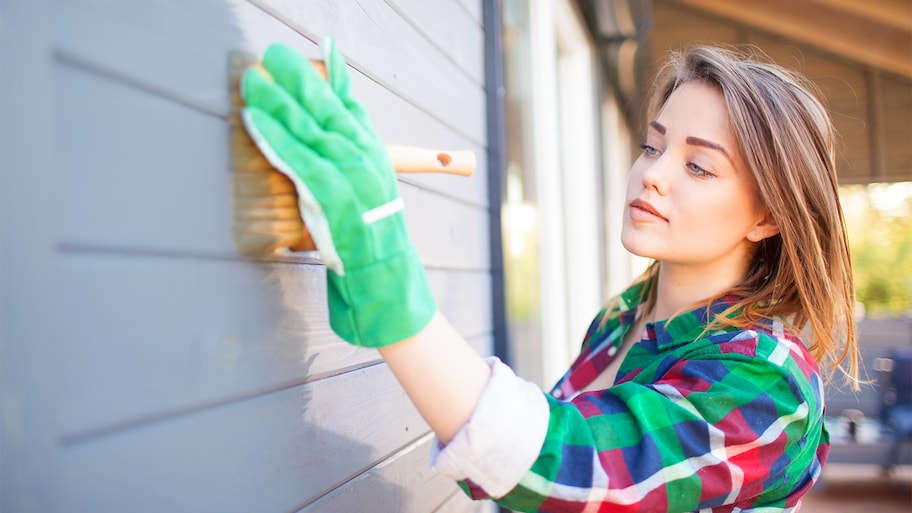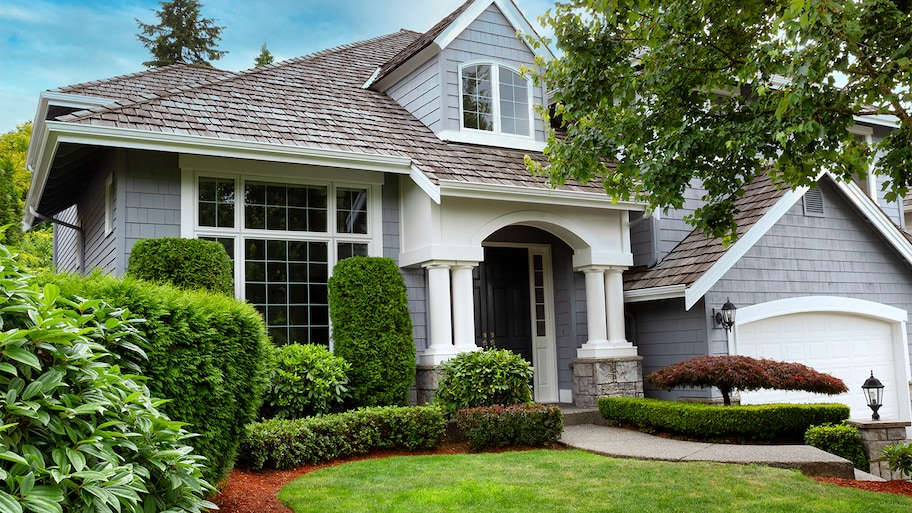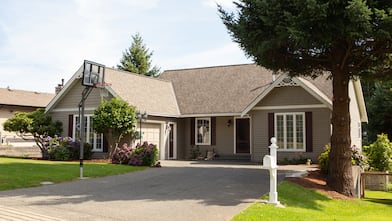Make your paint job look profesh
Painting your house can feel like an insurmountable challenge—but it’s vital to keep your home protected from weather and wear and tear. Rain, sun, and fluctuating temperatures will cause every paint product to fail eventually, but these house painting tips will help you stay ahead of the maintenance and do it right the first time around.
Difficulty: 3 out of 5Time: Up to 14 daysTools and Materials Needed:
Rollers, frames, and brushes
Buckets and screens
Painter’s tape
Roller poles
A commercial sprayer
Drop cloths
Caulking gun and caulk
A ladder
Rentals like a lift or scaffolding
PPE like safety goggles and a respirator
Sandpaper
Primer
Paint
1. Create a Budget
The last thing you want is sticker shock when you get the final bill, so before you even begin, sit down and write out all the materials you’re going to need to buy before painting your house.
Supplies will typically cost you $200 to $300 total. The typical cost to paint your home’s exterior yourself can range from $500 to $1,000.
Calculate Your Home’s Square Footage
In order to estimate the cost of paint, you’ll need to figure the square footage of your home exterior’s surface area first. The average price per square foot ranges from $0.50 to $3.50 depending on where you live, the current condition of your house, and accessibility.
The square footage of the interior is not the same as the paintable surface of your home’s exterior. For a 2,500-square-foot home, for example, you’ll likely end up with anywhere from 1,600 to 2,700 square feet of paintable surface area, according to HomeAdvisor.
To figure out your surface area, multiply the length of your home’s perimeter by the height. Your total paintable area is the resulting number minus the area of doors and windows from the total finished area. For reference: A standard door is 21 square feet and a standard window 12 square feet. Of course, if you have a larger house, you’ll need to account for the extra square footage.
2. Prep Your House
The most important part of any painting job is the exterior surface preparation; your topcoat is only going to be as good as the basecoat of old paint or primer. This involves pressure washing your home and allowing it to dry completely, testing for lead, sanding the siding, and patching any damaged areas.
3. Apply a Primer Coat
Before you paint, you’ve got to prime. The type of primer and how it’s applied will vary, but the most important thing to accomplish with primer is to create a solid basecoat and cohesive shell of material on all the surfaces you’d like to paint. Multiple coats of primer with a good sanding between each coat is a smart idea.
4. Paint the Topcoat

The majority of time spent on any paint job is preparing for the moment when you start applying the topcoat. The topcoat is the fun part, where you can play with colors and put the finishing touches on your home’s exterior.
Using high-quality tools is important, and most painters work from the top down. Be sure to coat all primed surfaces with paint within two weeks, because primer is not designed for long-term exposure to the elements.
Pro Tip: If you’re using painter’s tape to protect your trim and windows from wayward paint strokes, remove it while the paint is still wet. Otherwise, you risk ripping your fresh paint job off along with it.
5. Clean Your Equipment
As soon as you’re done for the day, clean your brushes thoroughly so they have a long lifespan. You’ll also want to immediately clean out your sprayer, whether you own one or are using a rental.
Thick wire brushes and a deep sink or five-gallon bucket are essential for scrubbing built-up paint from the shank and bristles of your brushes. Hot-water soaks and a good rinsing of the roller frames each day will also ensure your tools are still useful for the entirety of the project. Having a handful of painter’s rags handy throughout the day and during cleanup is also a great way to stay clean.
Once your topcoat is applied and dry, you’re done!





